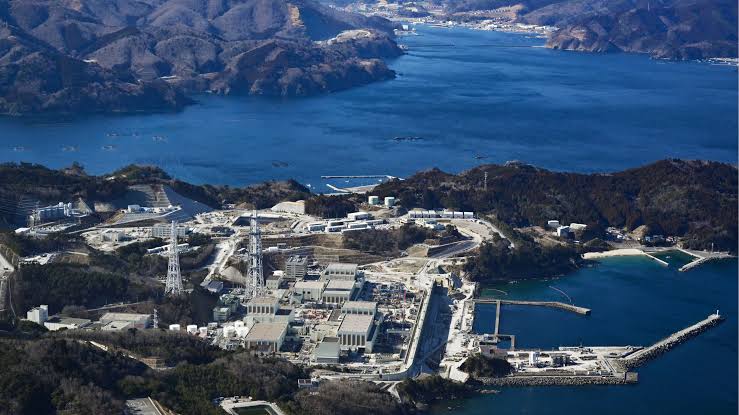Japan’s 2011 disaster-hit region sees reactor restart for 1st time

This photo taken from a Kyodo News airplane on Oct. 24, 2024, shows the Onagawa nuclear power plant in Miyagi Prefecture.
A nuclear reactor resumed operation Tuesday for the first time in north-eastern Japan since the region was affected by the 2011 earthquake-tsunami disaster, which also triggered a nuclear crisis, joining a dozen reactors in the country that have been rebooted after meeting more stringent safety standards.
The restart of the Onagawa nuclear power plant’s No. 2 unit in Miyagi Prefecture also marks the first time in Japan that a boiling water reactor — the same type as the Fukushima Daiichi reactors that suffered fuel meltdowns during the nuclear crisis — has been brought online since the 2011 disaster.
“Nuclear power and renewables are important electricity sources to advance decarbonization. We will maximize their usage on the premise that safety is guaranteed and from the standpoint of ensuring a stable supply,” Chief Cabinet Secretary Yoshimasa Hayashi told a press conference earlier in the day.
The Onagawa reactor, operated by Tohoku Electric Power Co., cleared safety screening in February 2020 under tougher post-Fukushima crisis safety standards and gained local consent to resume operations.
Tohoku Electric Power spent over a decade completing construction work to enhance the plant’s safety, including building a 29-meter-high tide wall and upgrading the reactor building’s earthquake resistance.
During the March 2011 disaster, all three reactors at the Onagawa plant, which straddles the town of Onagawa and the city of Ishinomaki, automatically shut down.
The nuclear plant, located closest to the epicenter of the magnitude 9.0 earthquake, was struck by tsunami waves around 13 meters high.
The basement of the building housing the No. 2 unit, which was undergoing a regular inspection at the time, was flooded. Tohoku Electric Power has since decided to decommission the No. 1 unit.
Last month, Tohoku Electric Power loaded 560 fuel assemblies into the No. 2 reactor as part of preparations to restart it.
The utility plans to begin power generation and transmission in early November and commercial operation around December.
While the Japanese government is pushing ahead to restart nuclear reactors in the resource-poor country, concerns over the safety of nuclear power linger among the public.
Over a dozen residents in Ishinomaki filed a lawsuit in 2021 seeking to keep the Onagawa plant’s No. 2 unit offline, citing flaws in an emergency evacuation plan. The Sendai District Court dismissed the claim in May 2023, and the plaintiffs appealed.
Around 30 protestors gathered near the Onagawa plant located on the Pacific coast to express their opposition to the reactor’s restart on Tuesday.
Two civic groups, including environmental group FoE Japan, issued a joint statement opposing the resumption, saying that concerns remain over the evacuation plan as residents in some areas close to the plant could end up stranded.
Hayashi, the government’s top spokesman, pointed out that authorities will continue preparing for all contingencies in the event of a nuclear disaster.
Other than the Onagawa No.2 unit, a dozen reactors at six nuclear power stations in central, western and southwestern Japan have resumed operation after meeting the tougher safety standards.



